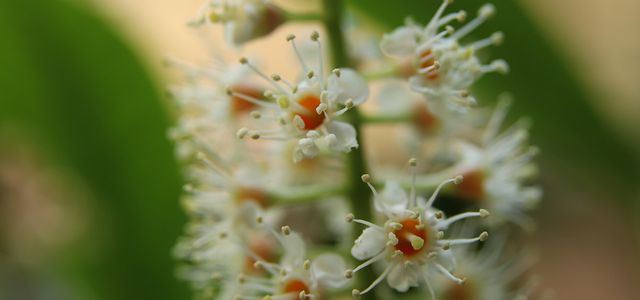
Planting cherry laurel provides a decorative eye-catcher and privacy screen. However, the hedge plant is not suitable for an insect-friendly garden.
Cherry laurel is an evergreen shrub and offers protection from prying eyes all year round. Common garden varieties are all hardy and can grow up to four feet tall. In spring, the shrub forms white, upright inflorescences. These later develop into the red fruits that give the shrub its name.
Contents
Cherry Laurel: An invasive plant species

Even though cherry laurel has some advantages – you should not plant it in your garden.
The leaves and fruits of the hedge are poisonous. They do not provide a food source for insects and birds. Therefore, cherry laurel is not suitable for an insect-friendly garden.
The plant also poses a risk to pets and children.
Cherry laurel originates from Asia Minor. The plant reproduces extremely quickly, driving native plant species out of gardens and forests. These plants were previously an important food source for many animals.
If you want to plant an ecologically safe hedge, you can use the following native alternatives instead:
- Hawthorn
- Blackthorn
- Hazelnut
- Yew (also belongs to the evergreen plants).
What if the cherry laurel is already there?

If you already have a cherry laurel plant, you don’t necessarily need to remove it. You can make sure that the plant doesn’t grow too big and take up too much space in your garden – leaving enough area for more insect-friendly plants. Here’s what you should keep in mind when caring for it:
Pruning: Like most hedge plants, the cherry laurel needs a topiary once a year, which is best done in June. Use a pair of hand hedge shears for this purpose, as electric devices often cannot cut through the thick leaves of the cherry laurel properly. Cut back the shrub generously. If the shrubs grow particularly quickly, you can remove the overhanging branches a second time in the fall.
Neighboring plants: Recommended neighboring plants for cherry laurel are various conifers as well as azaleas, rhododendrons and ferns.
Planting distance: Cherry laurel grows and compacts very quickly. Therefore, you should plant neighboring plants at a sufficient distance.
Pests and diseases: The hardy cherry laurel is well protected from most diseases and pests. Occasionally, however, it can be affected by shotgun disease, in which a fungus causes brown spots on the leaves, especially on young plants.
Watering: Laurel doesn’t need much water – you can only water it twice a week during extremely dry periods. It is important that you water close to the ground. This will prevent the leaves from getting wet and moldy or burned by the sun.

